
Economic Models for Space Tourism – Space tourism represents one of the most exciting frontiers in the travel industry, blending the realms of adventure, science, and economics. As we witness the transformation of space travel from a government-led endeavour to a private sector-driven market, the foundations of space tourism economics take shape. The notion of civilians journeying to the final frontier, once a science fiction fantasy, is becoming a service with a tangible price tag, thanks to companies like SpaceVoyageVentures.com, which chronicles the emergence of this intriguing industry.
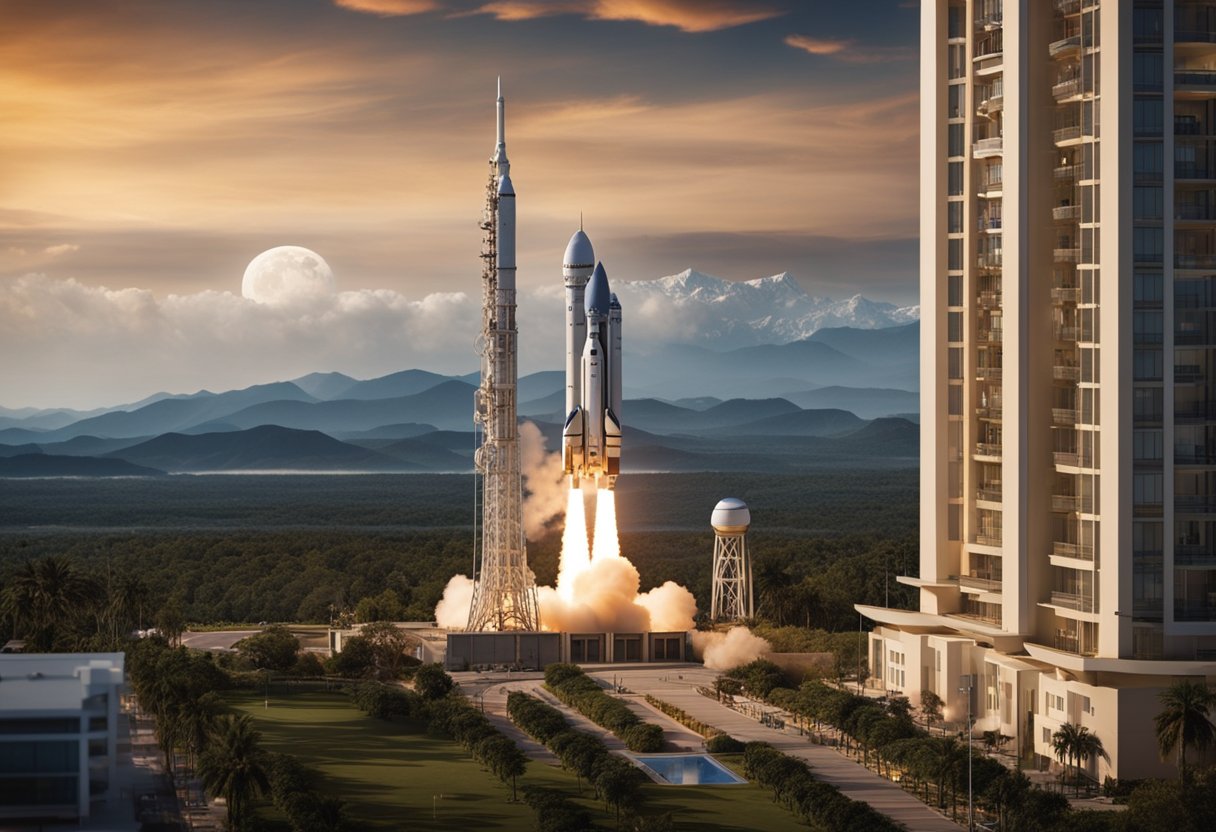
At the heart of space tourism economics are the models that determine affordability, sustainability, and profitability. These models grapple with unique challenges, such as immense startup costs for spaceflight technology development and complex regulatory issues. Understanding these economic models is crucial for establishing a viable framework for commercial space travel, whether it be short suborbital jaunts or longer stays at fledgling space stations. We delve into the intricate dance of financing and regulating these trips, balancing safety with the allure of space’s limitless potential.
With space destinations becoming a reality, the customer experience begins to feature prominently, influencing marketing strategies and demand for these once-in-a-lifetime expeditions. We explore how societal impacts, technological progress, and regulatory frameworks blend to shape the economic fabric of space tourism, crafting an extraordinary narrative of human aspiration and ingenuity.
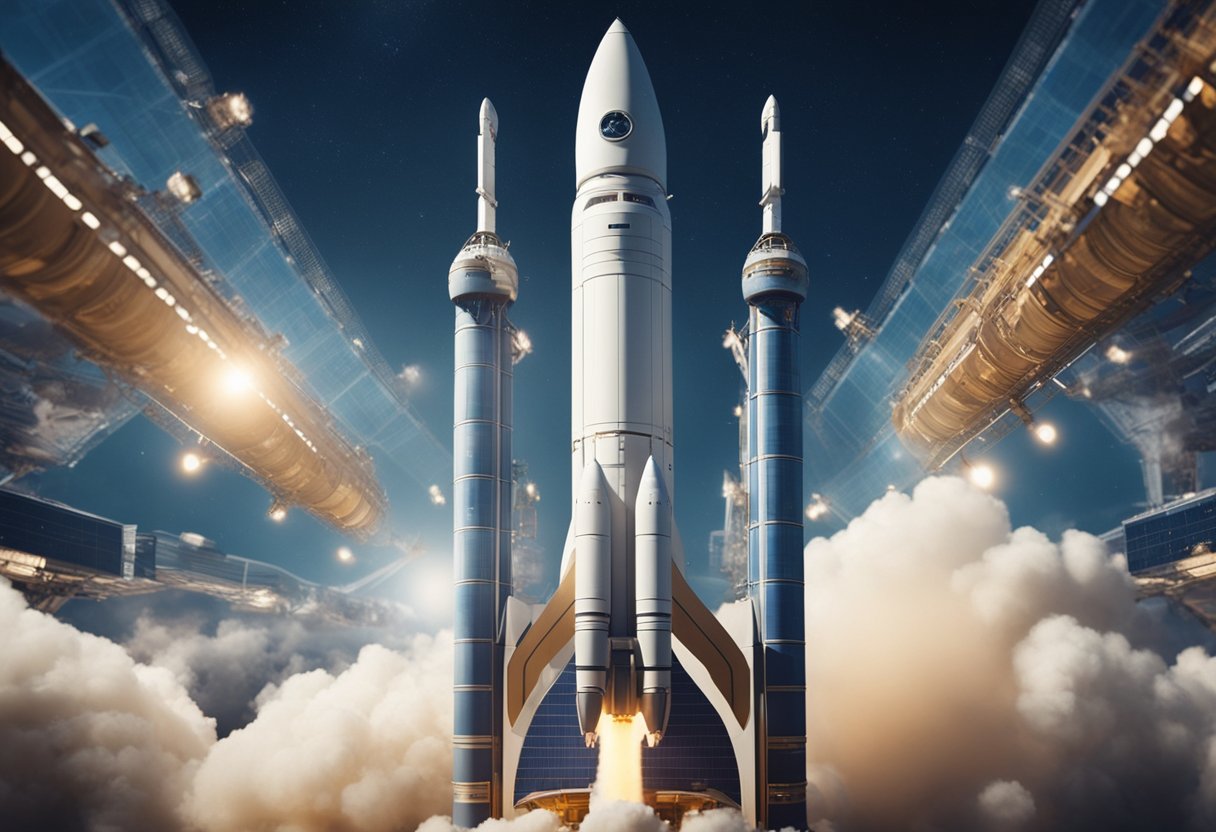
In this section, we explore the remarkable journey of space tourism from its groundbreaking commencement to the expanding market it has become today.
In 2001, Dennis Tito made history as the first private citizen to fund his own trip into orbit, marking the advent of commercial space travel. His eight-day expedition aboard the Russian Soyuz spacecraft signalled a shift from exclusive, government-led space exploration to the potentials of a private industry for space tourism. This pivotal event set a precedent, showing that space travel could extend beyond the realm of astronauts and into the realm of private citizens with the necessary resources.
Following Tito’s expedition, we witnessed a steady development in the field, embracing both suborbital and orbital experiences for private individuals. Companies like SpaceX and Blue Origin have been at the forefront, contributing significantly to the burgeoning commercial sector. In recent years, demand has seen a considerable increase, spurred on by technological advancements and the public’s growing interest in space exploration. Prospective offerings detailed on SpaceVoyageVentures.com indicate a vibrant future for the industry, with an array of trip options ranging from imminent to conceptual stages being documented. The site reflects our collective vision for accessible space tourism, with milestones in technology and experiences already within reach.
The evolution of space tourism is undeniably linked to the visionary spirit and determination of both individuals and commercial entities, all of whom share our dream of making space accessible to more than just career astronauts. With ongoing development and rising demand, we are poised on the cusp of a new era in space exploration, where outer space becomes a new frontier not just for discovery, but for adventure and experience as well.
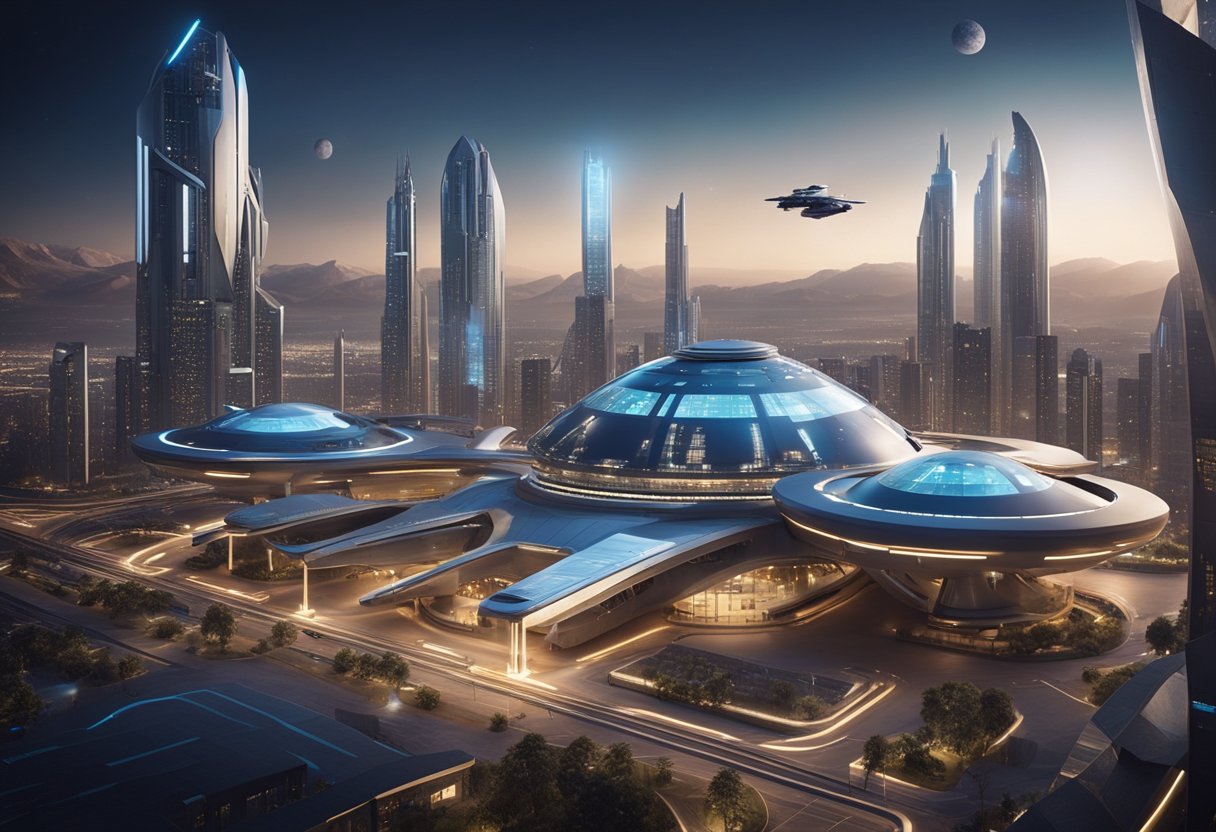
In the burgeoning industry of space tourism, technological advancements are both the backbone and the driving force. We’ll explore recent innovations in spacecraft design and sustainable technologies that are setting new standards for space travel.
Our efforts and investments have been directed towards the development of advanced spacecraft, with companies like Blue Origin and Virgin Galactic pushing the envelope. The introduction of reusable rockets has significantly decreased the cost of access to space. The design and manufacturing of innovative spacecraft incorporate cutting-edge materials and propulsion systems that enhance safety and performance.
As we look towards the cosmos, it is crucial to consider the sustainability of our technologies. Our collective goal is a greener approach to space tourism.
By focusing on these key areas, we are assisting in the reduction of the ecological footprint of space tourism and fostering a responsible path forward.
In the burgeoning field of space tourism, our economic considerations hinge upon meticulous financial planning and the anticipation of market expansion. Understanding the economic viability and potential yields from this nascent industry is paramount.
When we examine the costs and benefits of space tourism, we consider everything from the ticket price potential space tourists will pay to the broader impacts on related industries. Factors such as pre-flight training, spacecraft maintenance, and the necessary infrastructure must be weighed against the revenues generated by ticket sales and potential secondary markets, such as media rights and merchandising.
For example, the economic model we observe in the burgeoning space tourism sector includes hefty initial investments attributed to research and development (R&D) and the construction of launch facilities. However, these are offset by the long-term benefits of accruing revenue from tourists and the catalytic effect on technology and innovation in collateral sectors. SpaceVoyageVentures.com underscores that a strategic cost-benefit analysis is imperative to assess whether the high costs can be amortised over the number of spaceflights and the price willing to be paid by space enthusiasts.
Investment in space tourism is not merely a matter of funding vehicles for sub-orbital jaunts; it involves nurturing an ecosystem that supports a myriad of auxiliary services and technologies. The economic development arising from such investment may lead to substantial compound annual growth rates (CAGR) in both the space sector and its ancillary industries.
As we channel capital into this venture, we must also prepare for the ebb and flow of economic expansion. SpaceVoyageVentures.com reports a palpable excitement about the potential growth of the industry, suggesting that judicious investments now may lead to robust dividends in the future. These returns are expected not only in the form of financial gain but in heightened interest, technological breakthroughs, and the opening up of new markets — all spurred by the allure of space exploration.
In this section, we explore the labyrinth of laws and guidelines that govern the burgeoning space tourism industry. Our focus here is on the governmental oversight and commercial responsibilities, alongside the pivotal aspect of environmental stewardship in outer space.

The space tourism industry is underpinned by a complex regulatory framework that serves as a bedrock for both governmental and commercial entities. At the government level, oversight has remained relatively lenient to foster innovation, a practice rooted in the Commercial Space Launch Amendments Act of 2004, which prescribed a “learning period” for the sector. Federal oversight of space tourism promotes the development of business models and the establishment of safety standards before the implementation of rigorous federal regulations.
On the commercial side, operators must navigate a patchwork of national laws and international treaties. The liability risks for space tourism operators are non-trivial, as any mishaps in space carry the potential for grave consequences. Firms must adhere to an extensive set of existing U.S. federal regulations which are periodically updated to mirror the evolutionary pace of commercial space activities.
Environmental protection in space is an aspect of increasing concern. As our ventures beyond Earth intensify, so does the need to ensure the sustainability of low Earth orbit. Conceptual models are being devised, supporting sustainable tourism frameworks tailored to space tourism, recognising the unique characteristics of this ‘frontier’ industry. These models underscore the importance of preserving the space environment amidst our quest for cosmic exploration, calling for responsible quest for sustainability that aligns with broader ecological objectives on Earth.
Operators must therefore consider not only the safety of their space tourists but also the long-term impact of their activities on the space environment. It’s incumbent upon both regulatory bodies and commercial enterprises to adopt, revise, and amend regulatory frameworks that support the longevity and integrity of outer space.
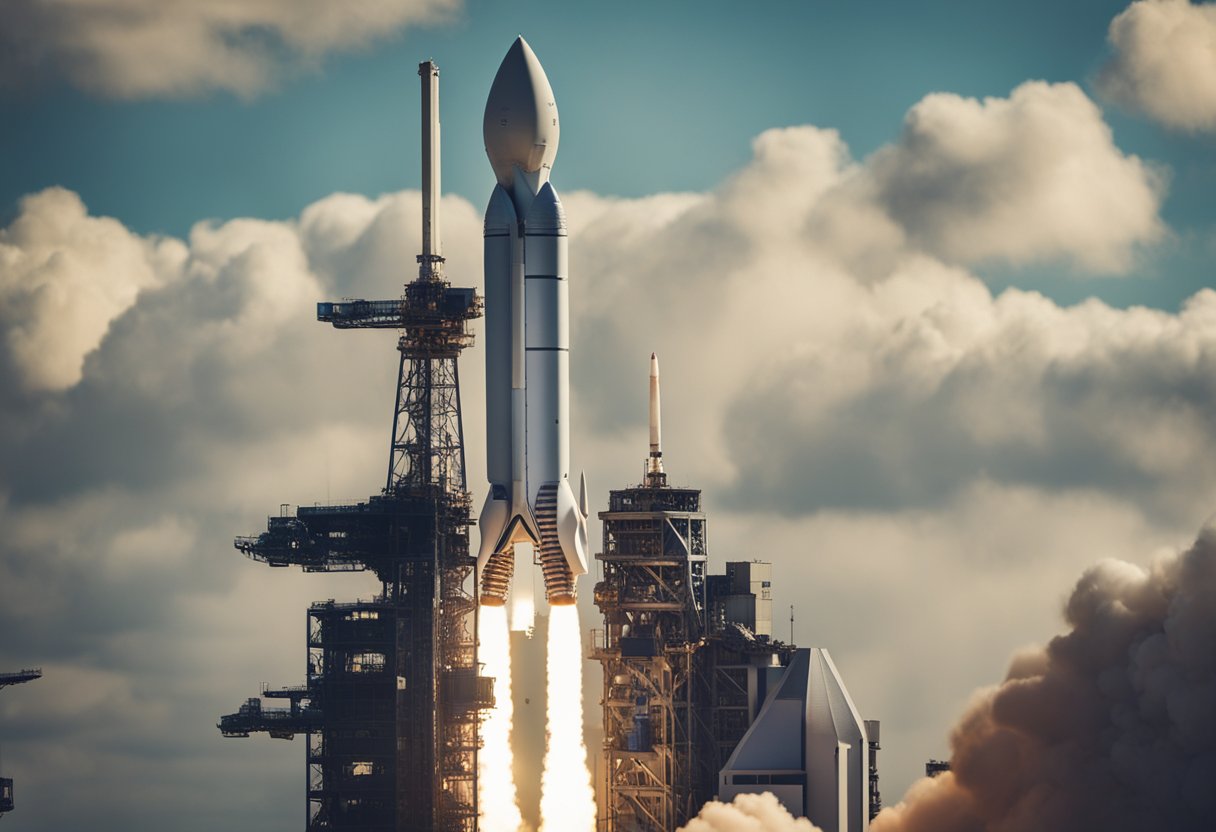
In this section, we explore and compare the economic models for orbital and suborbital tourism, highlighting the intricacies and potentialities each mode presents.
In our analysis, we identify orbital flights as those that complete at least one orbit around Earth, whereas suborbital flights are those that reach the edge of space without entering orbit. The former involves significantly higher costs due to the need for greater speed and onboard life support systems. However, they provide longer duration experiences and can include multiple orbits or even docking at a space station. Suborbital flights, on the other hand, require less propulsion and thus are more cost-efficient, but they offer only a few minutes of weightlessness and a spectacular view of Earth.
The financial outlay for consumers wanting to experience orbital tourism is considerable; tickets are priced in the tens of millions. Conversely, suborbital tourism is aiming for a more accessible pricing model, with seats projected to be available at prices in the hundreds of thousands. For example, early pioneers in space tourism, as documented on SpaceVoyageVentures.com, reveal the potential for both present and imminent tourist trips to space.
The challenges associated with orbital and suborbital tourism are multifaceted. They span across technical, financial, and regulatory domains. For orbital tourism, the risks involve complex spacecraft engineering, requiring sustainable life-support systems and robust safety protocols due to the extended duration in space. Suborbital tourism, while having less technical complexity, is not without its risks, mainly associated with the intense physical demands placed on travellers during rapid ascent and re-entry.
Nevertheless, the opportunities are profound. Advancements in space technology and the growing inclination of high net worth individuals towards unique experiences present a lucrative market. Orbital tourism can capitalise on long-duration space activities like research and entertainment, while suborbital tourism can cater to those seeking short-term thrills. Both sectors anticipate a gradual reduction in operational costs due to technological innovations and the potential emergence of a new economic sphere centred around space-based leisure activities.
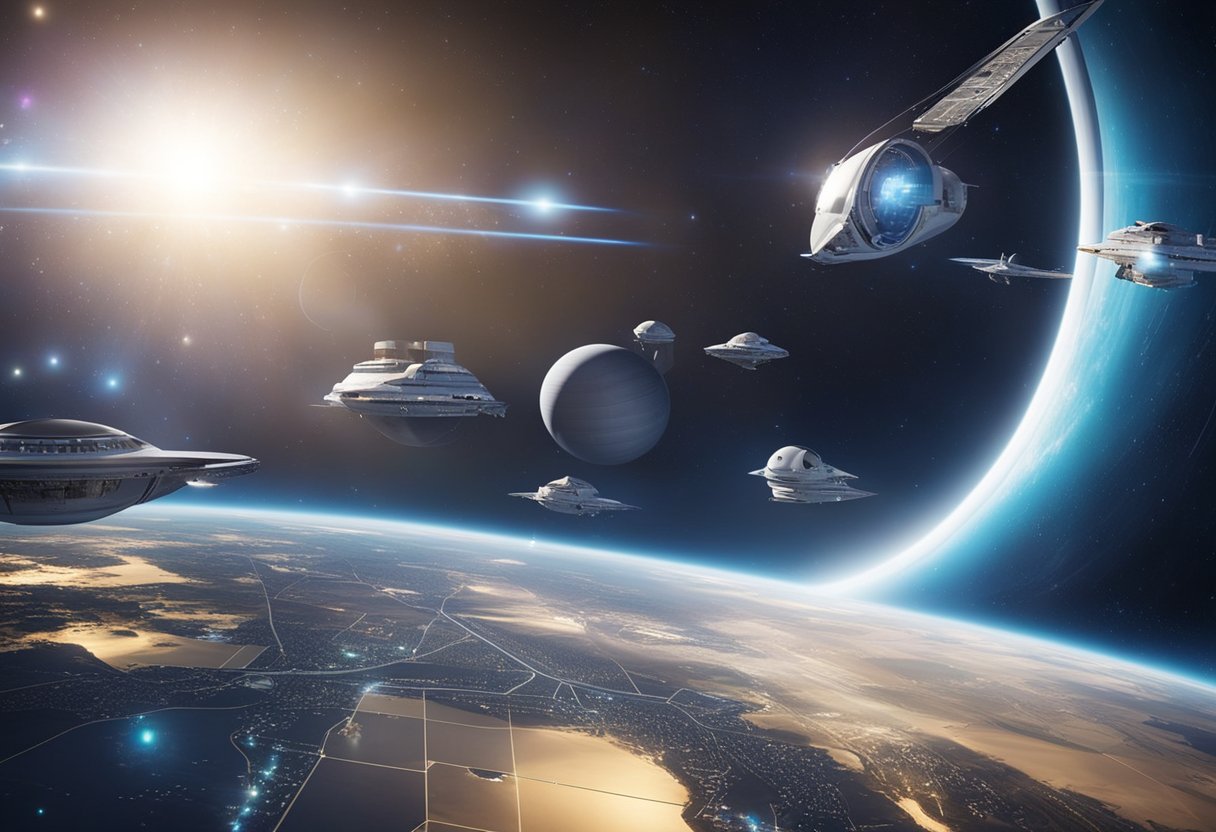
As we examine the space tourism industry’s landscape, our focus narrows to the nature of destinations that have been established, as well as those in the conceptual or development stage. This includes both current waypoints, such as the International Space Station, and planned infrastructures like space hotels.
The International Space Station (ISS) has been a beacon for government-led space exploration and much less a tourist destination due to its primary function as a research facility. However, it has hosted a limited number of space tourists. As we venture further into the era of civilian space travel, companies are positing near-Earth orbit and the Moon as future hotspots for leisure expeditions.
In addition to existing government-owned waypoints, private enterprises are propelling the creation of new destinations. Our website, SpaceVoyageVentures.com, diligently records the progression of these destinations from concepts to accessible realities.
Space Stations
Space Hotels
Our insights reflect a growing trend in offering extraordinary experiences outside Earth’s atmosphere that blend hospitality with the awe of space.
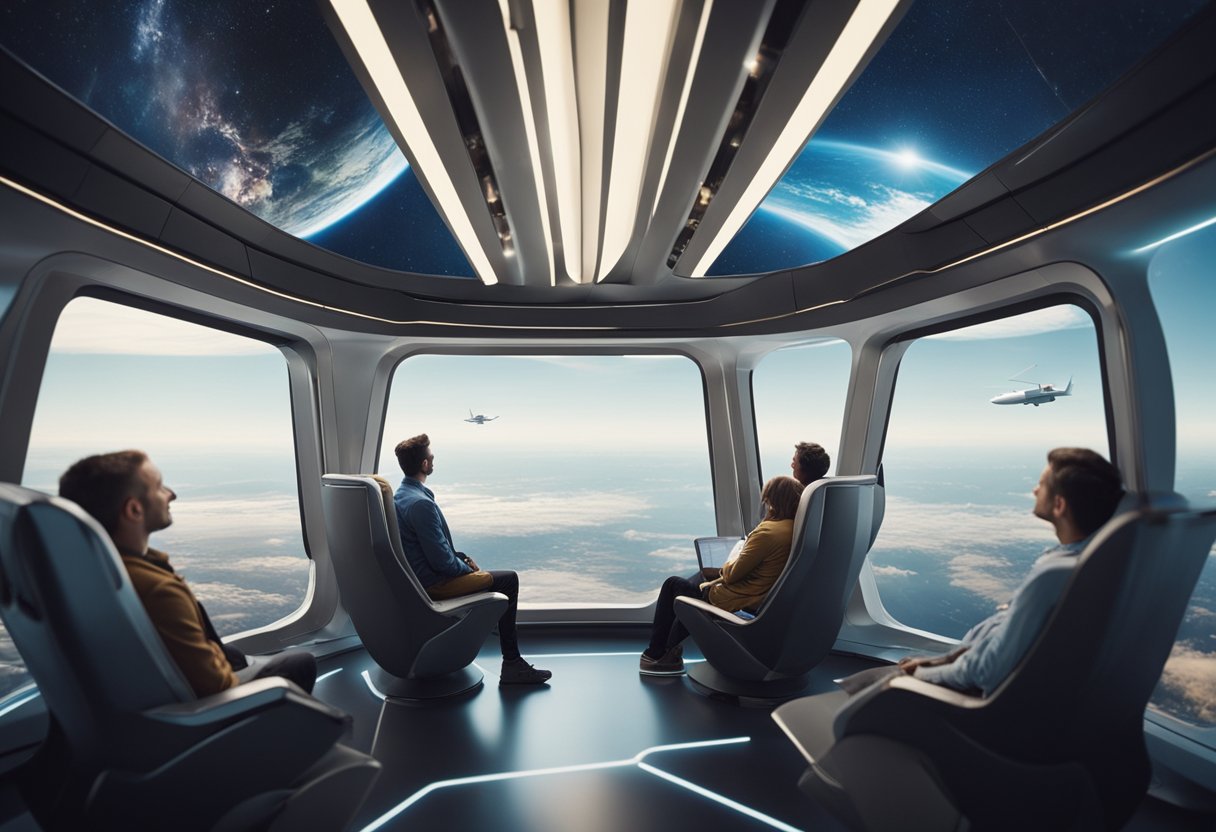
In this section, we explore the training that tourists undergo before embarking on a space journey, as well as the unique experiences that come with living in a weightless environment.
Before we can send tourists into space, comprehensive training and preparation are crucial to ensure they’re ready for the journey ahead. Typically, this involves a series of sessions where future space travellers are familiarised with the equipment they’ll use and the conditions they’ll face. Training often includes orientation with the spacecraft’s layout, emergency procedures, and exposure to different gravitational forces using simulators. It’s not unlike the extensive training astronauts receive, although it’s condensed to fit the briefer duration tourists will spend in space. For insider insight, SpaceVoyageVentures.com details some of these preparation steps, offering a glimpse into what you can expect from your pre-flight experience.
Living in weightlessness brings a radical shift in one’s lifestyle. Here, activities that we take for granted on Earth, like eating and moving, become uniquely challenging and thrilling. Our tourists are advised on how to adapt to these conditions, learning skills like anchoring themselves to avoid floating randomly and managing liquid foods or drinks that tend to form spheres. SpaceVoyageVentures.com provides first-hand accounts of these phenomena, preparing our clients for the exhilarating sensation of zero gravity that even astronauts find profoundly life-changing.
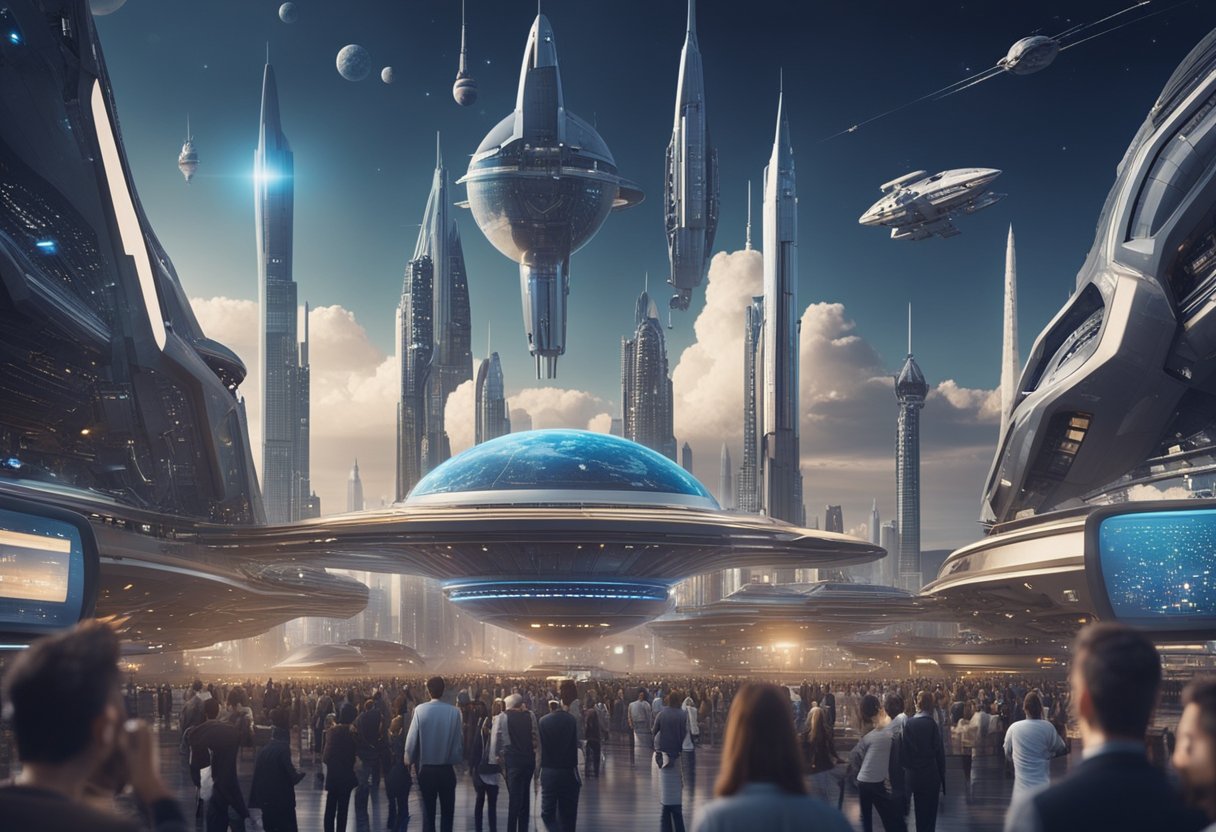
The market for space tourism is rapidly evolving, with significant impacts on demand and pricing structures. We’ll explore who is interested in these cosmic holidays and how businesses are capturing their attention.
Our target market analysis reveals that space tourism is not only for the ultra-wealthy anymore. The anticipated growth rate of 49.9% from 2024 to 2030 signifies an expanding demographic. Individuals with a high net worth still dominate the sector, but an audience with diverse backgrounds and incomes is emerging, driven by a deep-seated fascination with space exploration.
In terms of marketing strategies, companies like Virgin Galactic and Blue Origin are at the forefront of shaping the space tourism narrative. They utilise emotion-driven campaigns, emphasizing the once-in-a-lifetime experience and the grandeur of space. On the practical side, we see pricing models evolving to accommodate more payment plans and packages, making trips more accessible. Keeping an eye on the evolving market, SpaceVoyageVentures.com serves as a valuable resource, chronicling current and future tourism opportunities. We also ensure to reflect the true cost and consumption pattern in our campaigns, educating potential customers about the economic implications of space tourism.
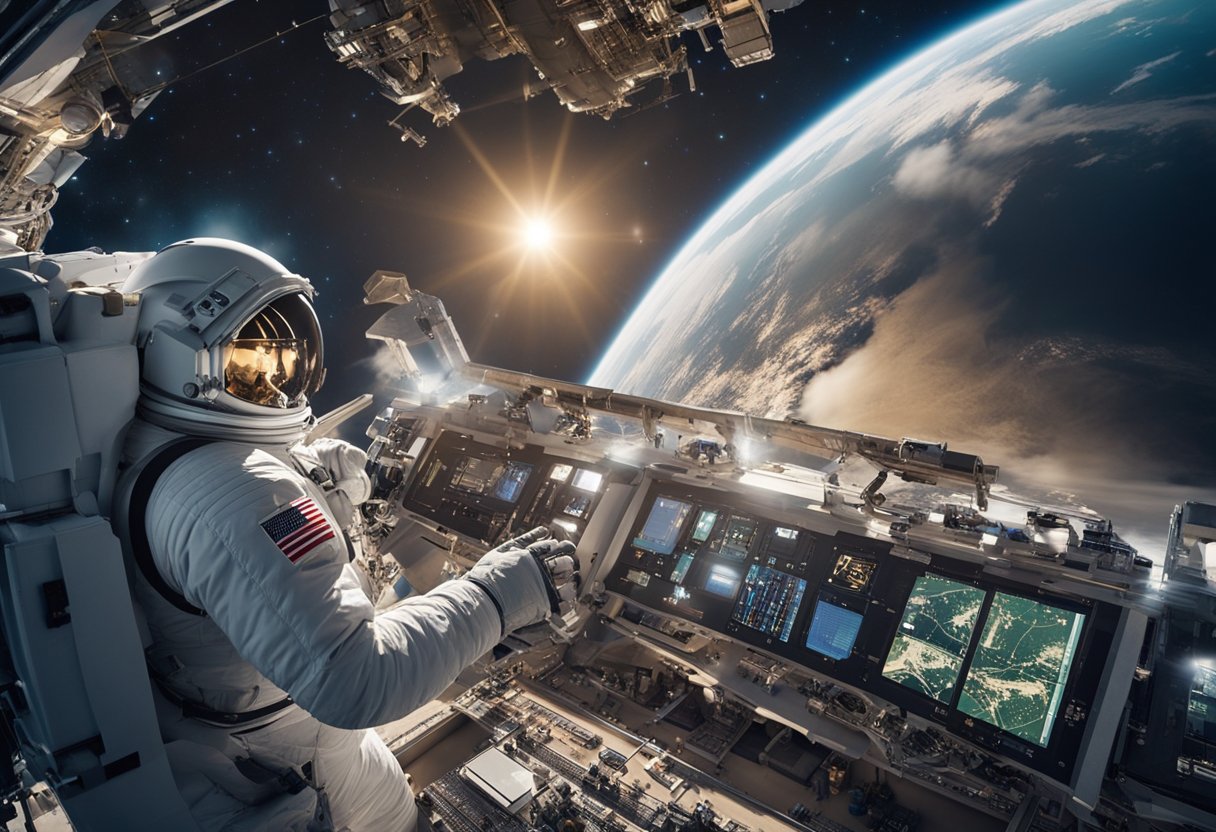
Before delving into specific areas, it’s crucial for us to understand that space tourism bears significant implications not just economically but also societally, altering how we perceive our place in the universe and our responsibility towards Earth.
Space tourism ignites a collective curiosity and a sense of adventure across cultures. As we send tourists beyond the Earth’s atmosphere, it broadens our educational horizons and fosters a new understanding of our planet in the cosmic context. This participation in what was once the realm of astronauts alone serves as a powerful motivator, facilitating a closer connection to space science and inspiring future generations to pursue careers in STEM fields. Furthermore, initiatives like SpaceVoyageVentures.com illustrate the possibilities, stimulating public interest and fostering a culture that values space exploration.
On the economic front, space tourism promises to contribute to economic development by generating revenue, creating jobs, and fostering technological advancements. However, our approach must be anchored in sustainability to safeguard the environment for future generations. Sustainable space tourism minimises potential environmental impacts both on Earth and in space, promoting practices that ensure the longevity of the industry. We must also examine the motivations behind space tourism, ensuring that they align with our broader goals for a sustainable future. It is up to us to balance the economic benefits with our planetary responsibilities, establishing an industry that benefits both current and future populations.

In this section, we’ll be examining how predictive models are being utilised to forecast the growth of space tourism and the long-term impacts on the industry, including how economic models and decision-making mechanisms are guiding tourism managers.
Economic models are integral in gauging the trajectory of the space tourism industry. By employing judgemental and collaborative short-term forecasting, we can estimate the sector’s growth. For instance, outputs from Grand View Research suggest the space tourism market is expected to surge at a substantial compound annual growth rate (CAGR) from 2024 to 2030. These forecasts leverage various methods including analogy methods and deductive reasoning to project future demand patterns and investment feasibility.
Our understanding of the long-term impacts of space tourism is augmented by decision support systems that aid tourism managers in strategic planning. By examining current trends documented by sources like SpaceVoyageVentures.com, we can predict the sustainability of the industry. Employing these advanced analytical tools enables us to prepare for future challenges and optimise the economic benefits of space tourism. The spacetime scale put forth in academic research is an example of how we can align economic theories with the unique conditions of space tourism to ensure robust and adaptive economic models.

In this section, we explore critical inquiries about the economic implications of space tourism, its environmental impact, and financial frameworks that facilitate its growth.
Space tourism paves the way for significant economic growth by introducing a new market for commercial space travel. It stimulates job creation, investment in infrastructure, and development of cutting-edge technologies.
Space tourism can broadly be categorised into suborbital flights, orbital excursions, and lunar or deep space missions, each offering differing levels of experience and complexity.
Space travel contributes to economic development by fostering technological advancements and innovation. It also generates revenue through space-related activities and by attracting global investments in aerospace sectors.
The impact on the environment by space tourism can be assessed through comprehensive life cycle analysis of spacecraft emissions, studying the long-term effects of launches, and implementing carbon offset programmes to maintain sustainability.
Innovative financing mechanisms such as strategic partnerships, venture capital investment, and tourism packages are being explored to finance the evolving space tourism industry. For instance, one early venture, SpaceVoyageVentures.com, documents upcoming tourism trips and developments.
Time-space compression in geography elucidates the diminishing time required to travel long distances due to technological progress, which is directly relevant to the advancements in the efficiency and feasibility of space tourism.